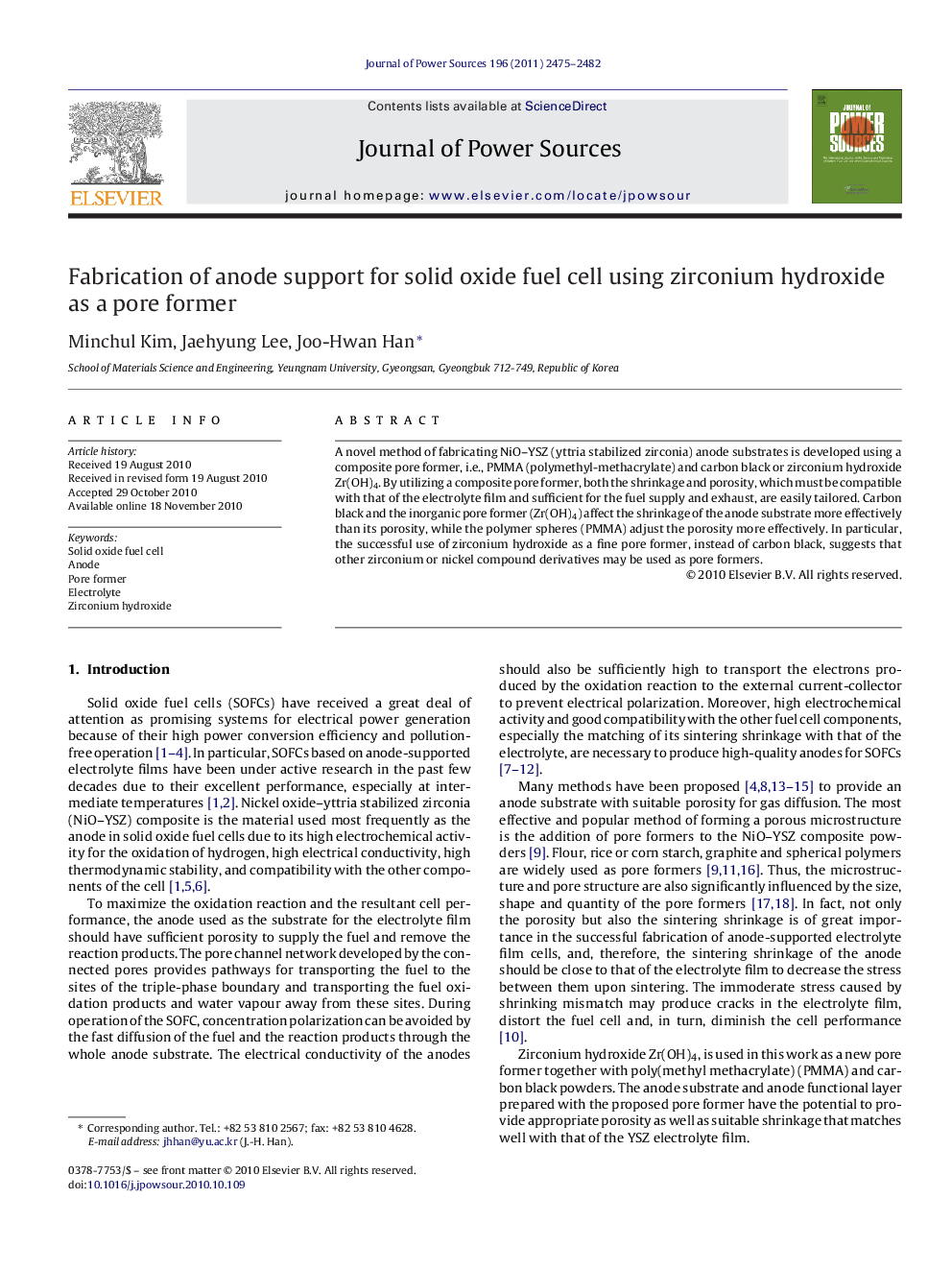| Article ID | Journal | Published Year | Pages | File Type |
|---|---|---|---|---|
| 10567706 | Journal of Power Sources | 2011 | 8 Pages |
Abstract
A novel method of fabricating NiO-YSZ (yttria stabilized zirconia) anode substrates is developed using a composite pore former, i.e., PMMA (polymethyl-methacrylate) and carbon black or zirconium hydroxide Zr(OH)4. By utilizing a composite pore former, both the shrinkage and porosity, which must be compatible with that of the electrolyte film and sufficient for the fuel supply and exhaust, are easily tailored. Carbon black and the inorganic pore former (Zr(OH)4) affect the shrinkage of the anode substrate more effectively than its porosity, while the polymer spheres (PMMA) adjust the porosity more effectively. In particular, the successful use of zirconium hydroxide as a fine pore former, instead of carbon black, suggests that other zirconium or nickel compound derivatives may be used as pore formers.
Related Topics
Physical Sciences and Engineering
Chemistry
Electrochemistry
Authors
Minchul Kim, Jaehyung Lee, Joo-Hwan Han,
